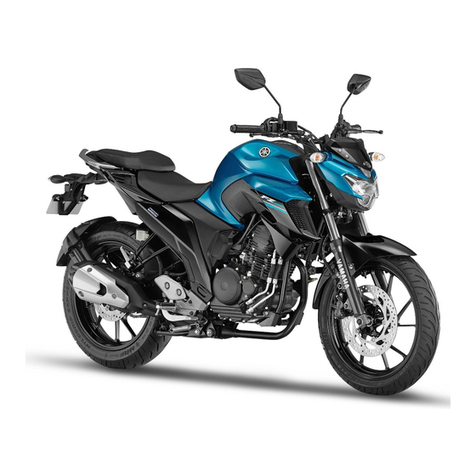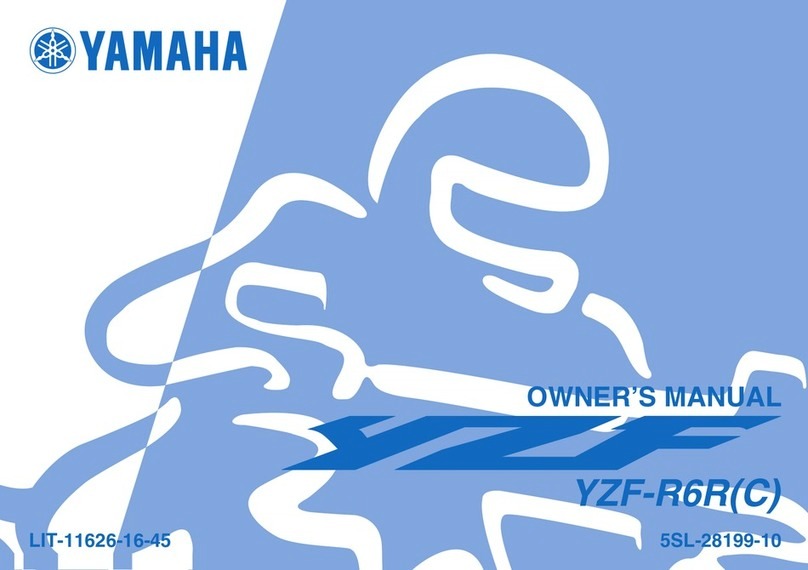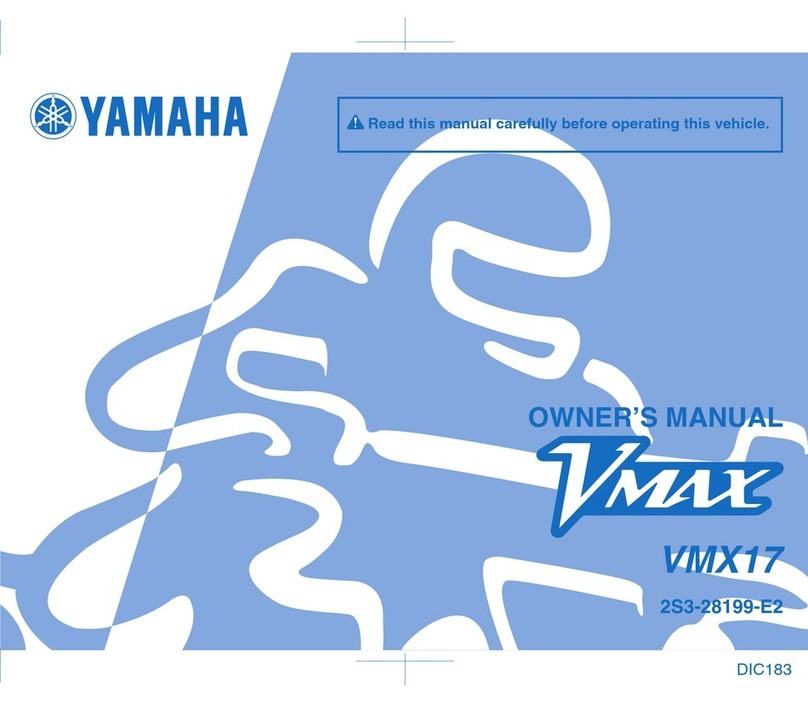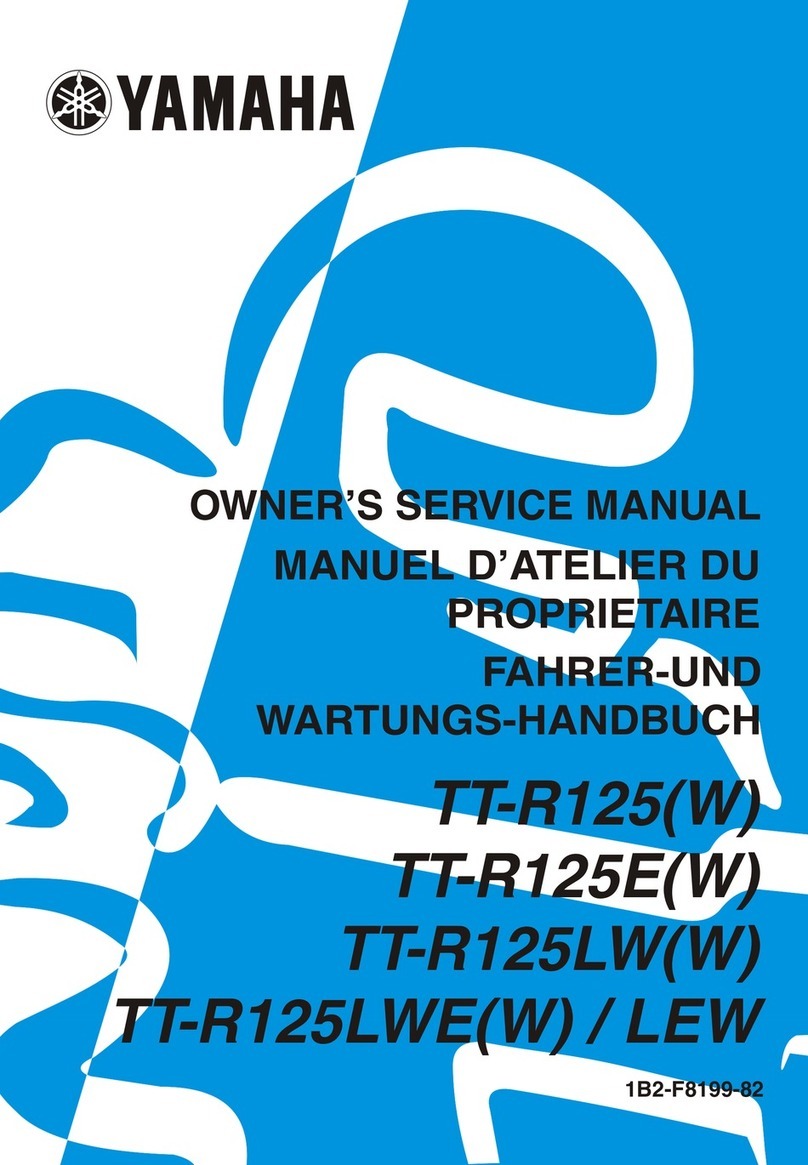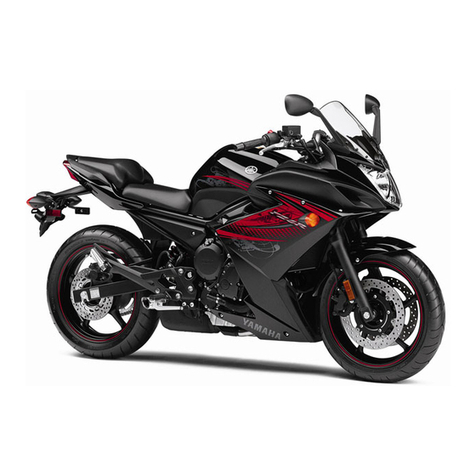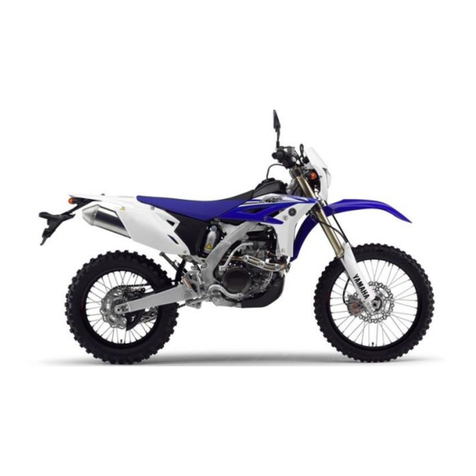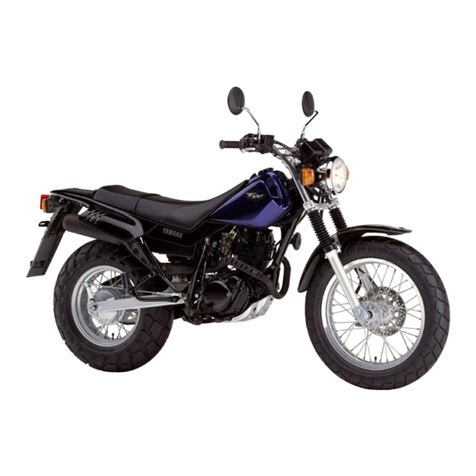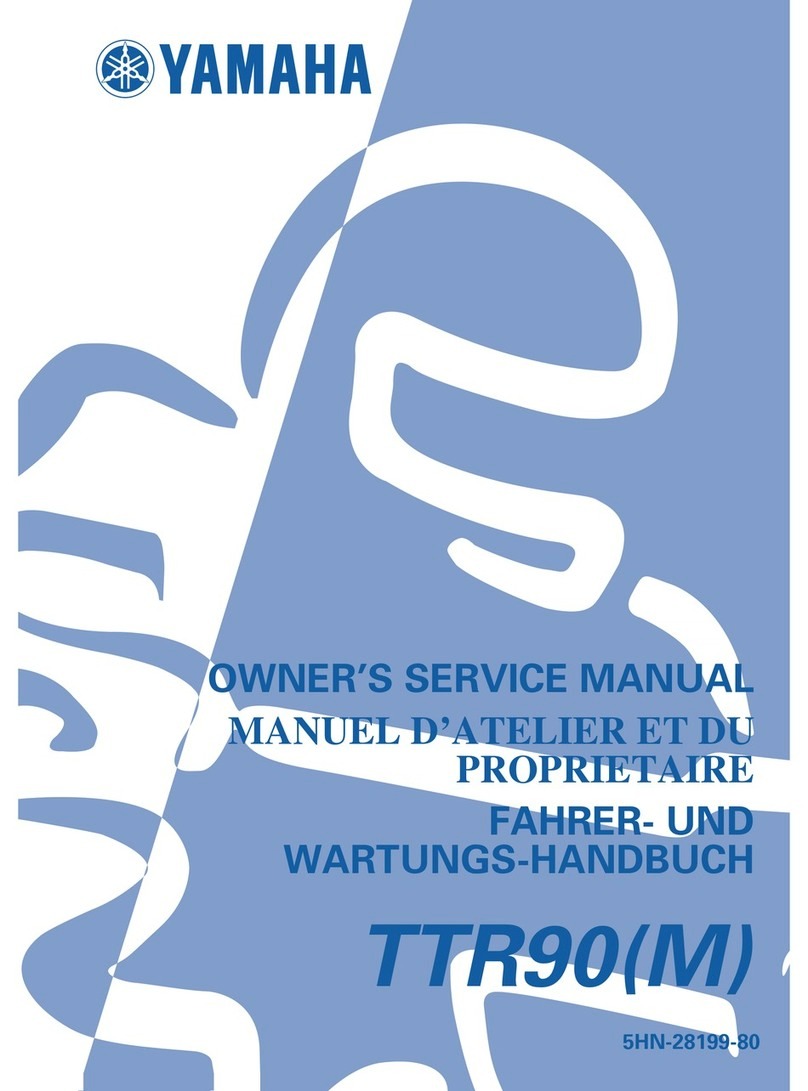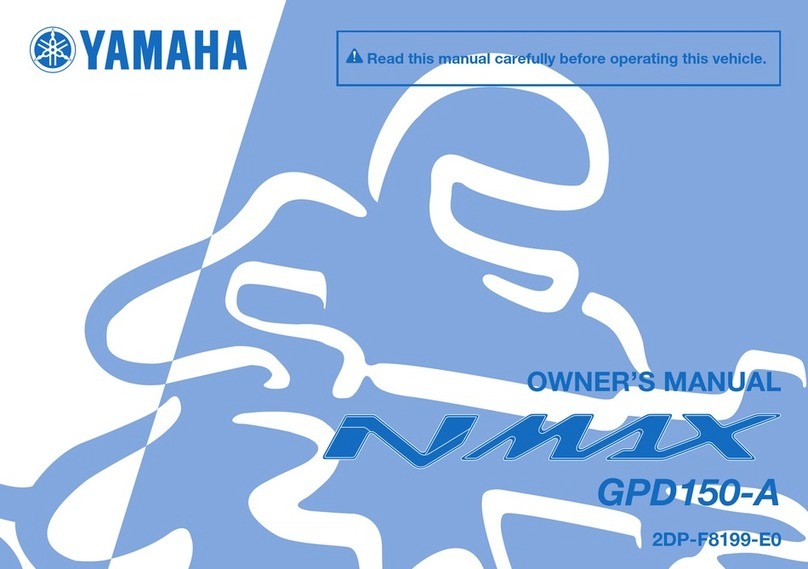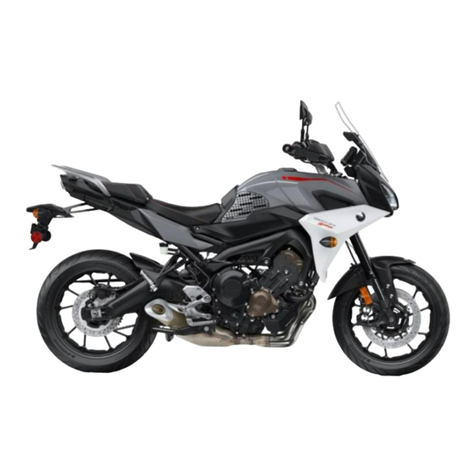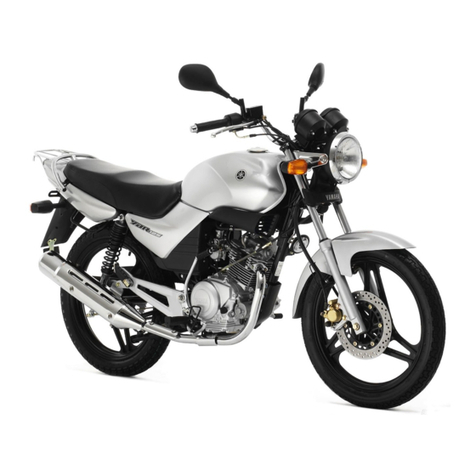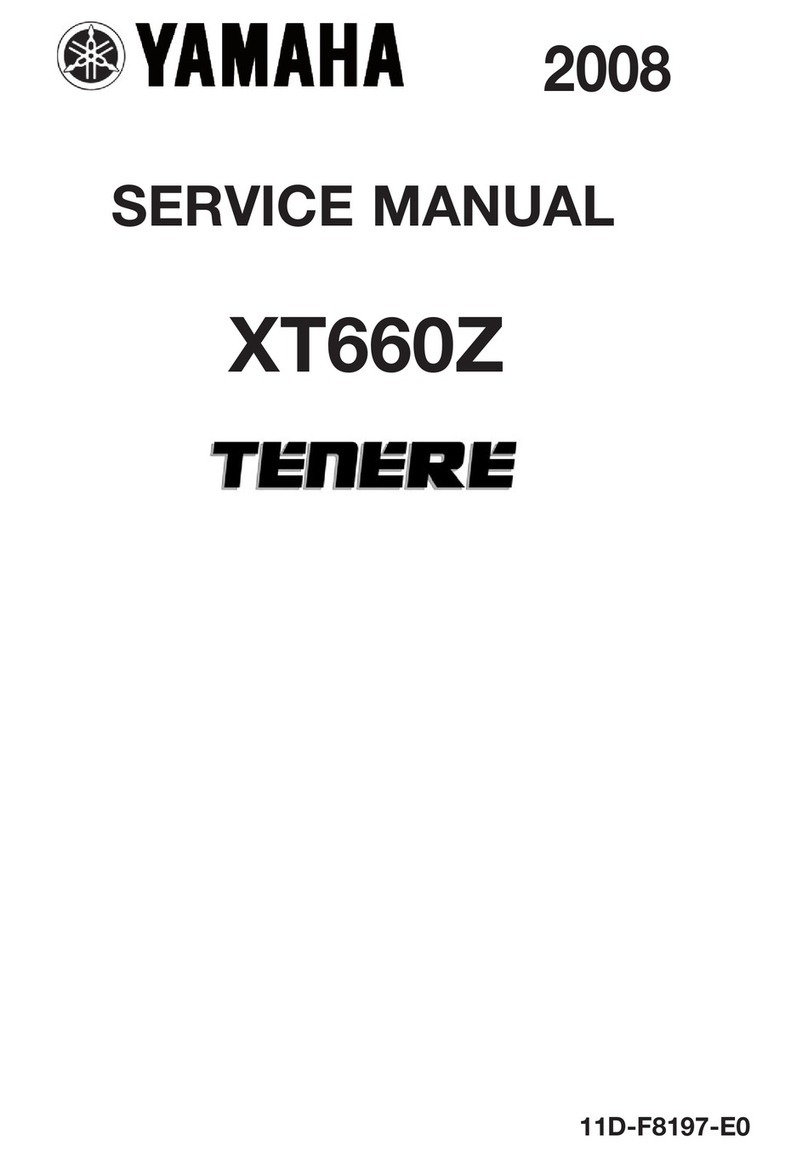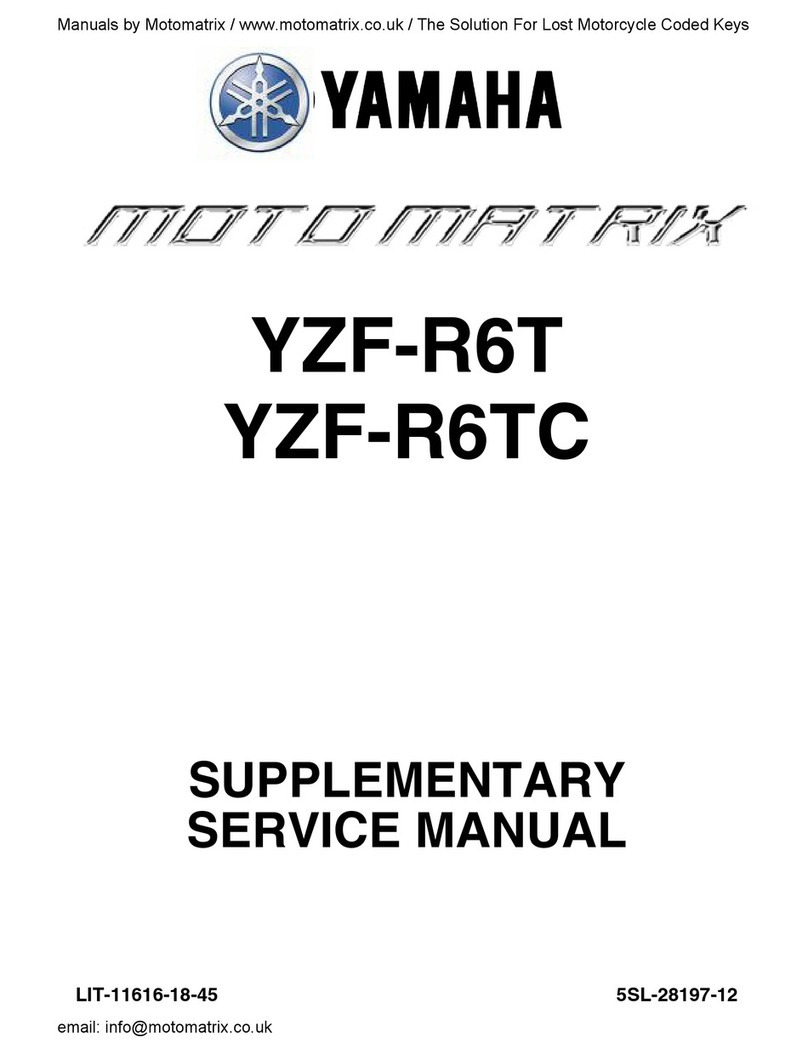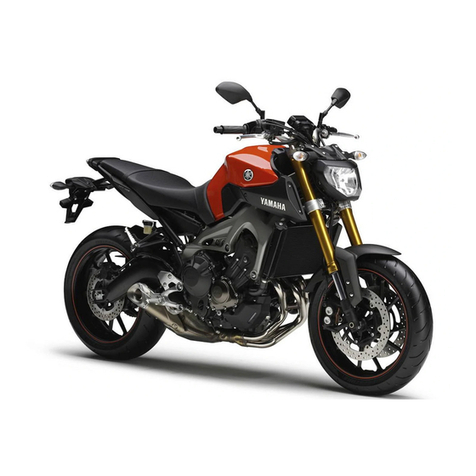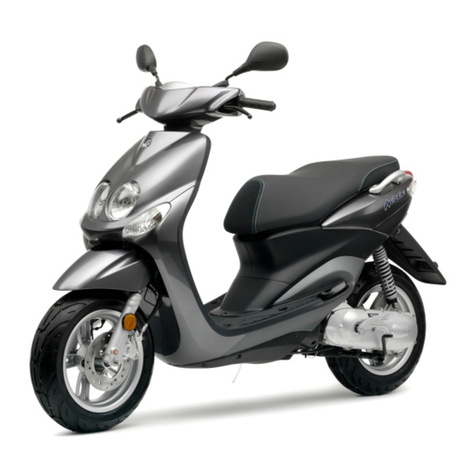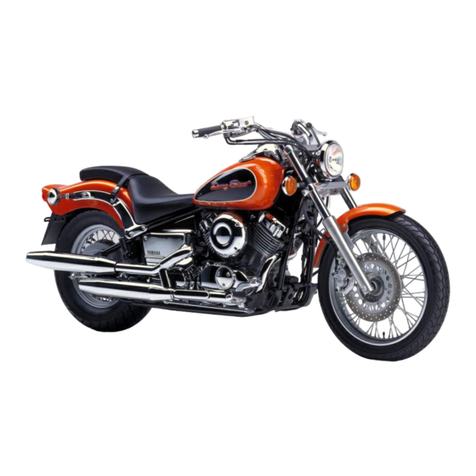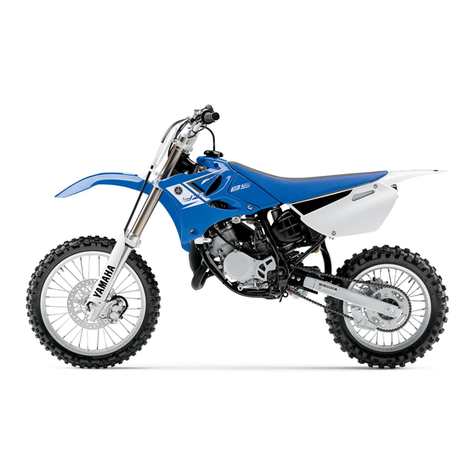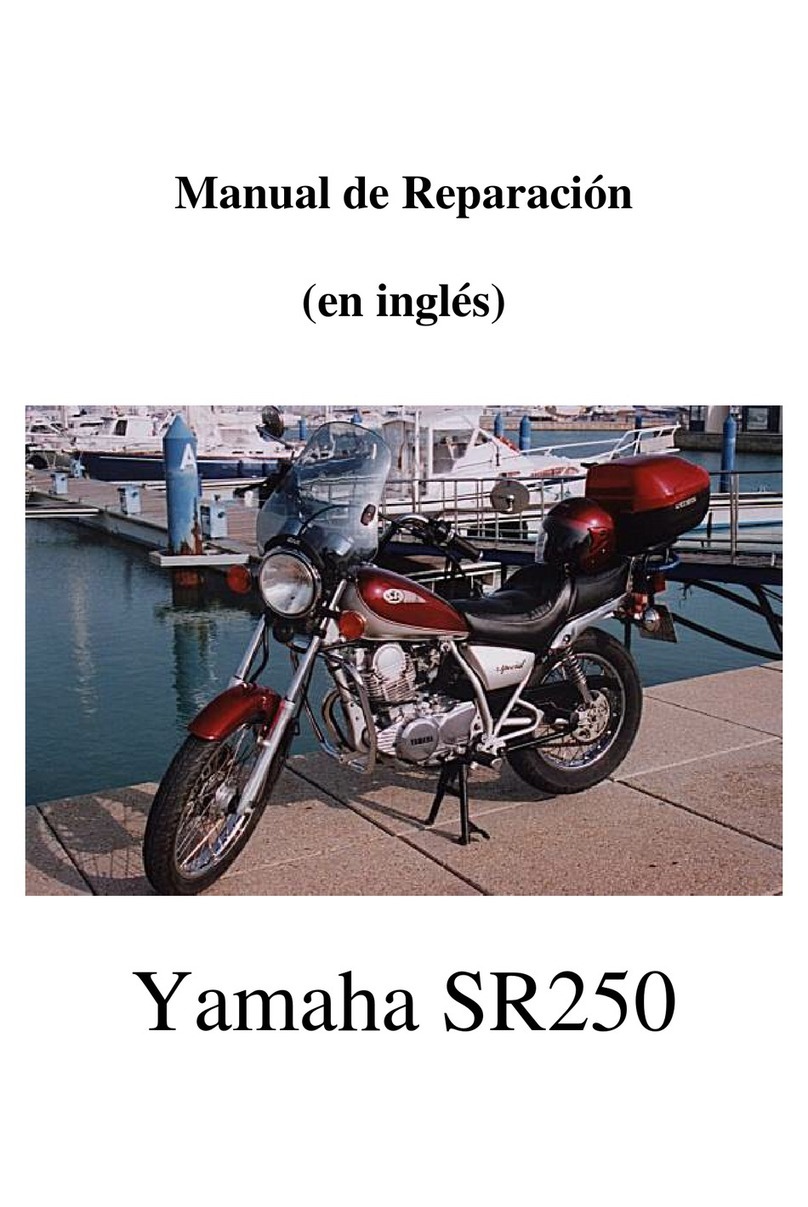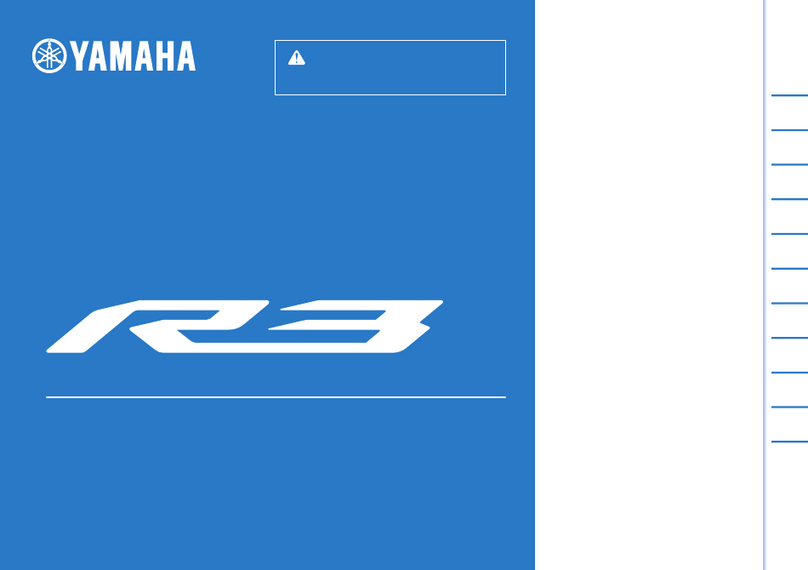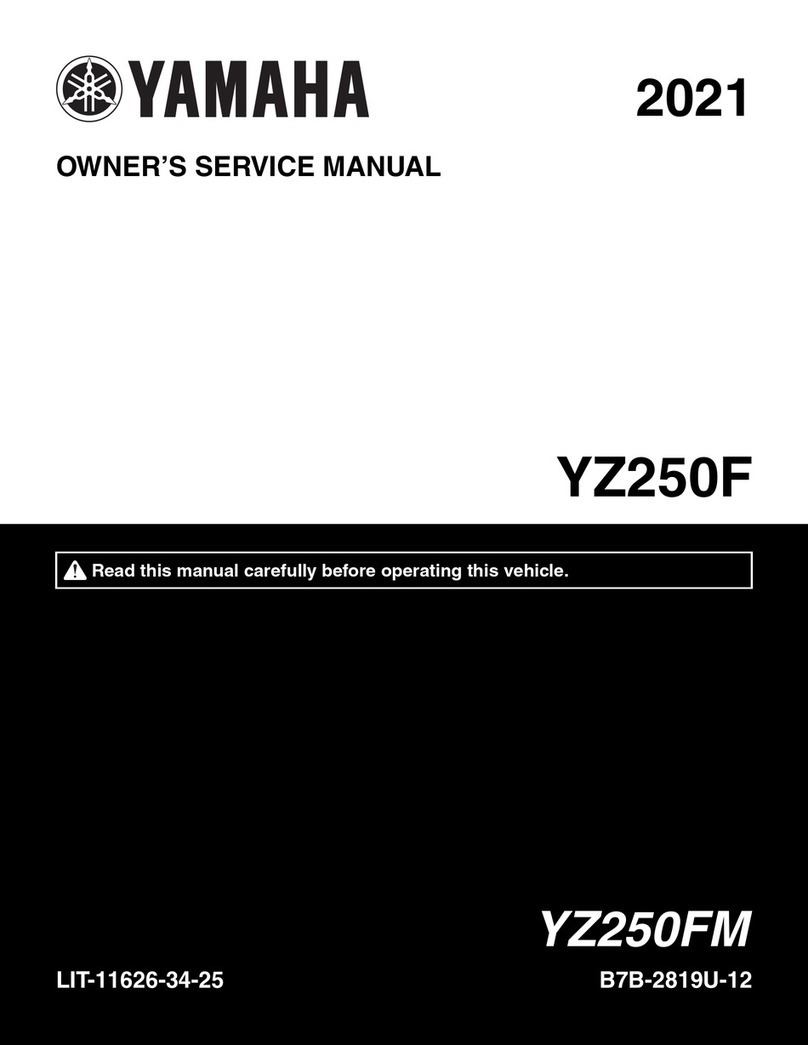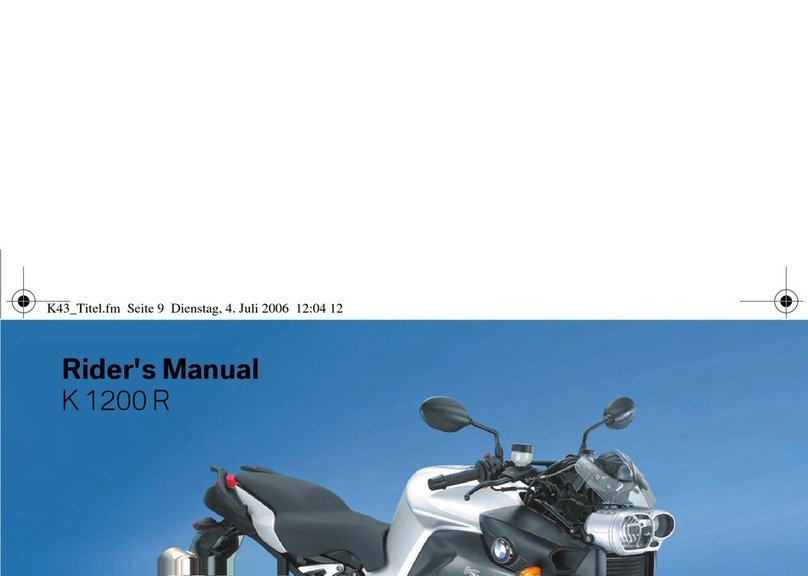
FEATURES
1-2
EAS20170
FEATURES
EAS5S71022
OUTLINE OF THE FI SYSTEM
The main function of a fuel supply system is to provide fuel to the combustion chamber at the opti-
mum air-fuel ratio in accordance with the engine operating conditions and the atmospheric tempera-
ture. In the conventional carburetor system, the air-fuel ratio of the mixture that is supplied to the
combustion chamber is created by the volume of the intake air and the fuel that is metered by the jet
used in the respective carburetor.
Despite the same volume of intake air, the fuel volume requirement varies by the engine operating
conditions, such as acceleration, deceleration, or operating under a heavy load. Carburetors that
meter the fuel through the use of jets have been provided with various auxiliary devices, so that an
optimum air-fuel ratio can be achieved to accommodate the constant changes in the operating con-
ditions of the engine.
As the requirements for the engine to deliver more performance and cleaner exhaust gases
increase, it becomes necessary to control the air-fuel ratio in a more precise and finely tuned man-
ner. To accommodate this need, this model has adopted an electronically controlled fuel injection
(FI) system, in place of the conventional carburetor system. This system can achieve an optimum
air-fuel ratio required by the engine at all times by using a microprocessor that regulates the fuel
injection volume according to the engine operating conditions detected by various sensors.
The adoption of the FI system has resulted in a highly precise fuel supply, improved engine
response, better fuel economy, and reduced exhaust emissions.
1. Air temperature sensor
2. Intake air pressure sensor
3. Engine trouble warning light
4. Fuel pump
5. Front cylinder injector
6. Rear cylinder injector
7. Throttle position sensor
8. Spark plug
9. Speed sensor
10.Relay unit (fuel pump relay)
11.ECU (engine control unit)
12.O2sensor
13.Lean angle sensor
14.ISC (idle speed control) unit
15.Crankshaft position sensor
16.Rear cylinder ignition coil
17.Front cylinder ignition coil
18.Engine temperature sensor
